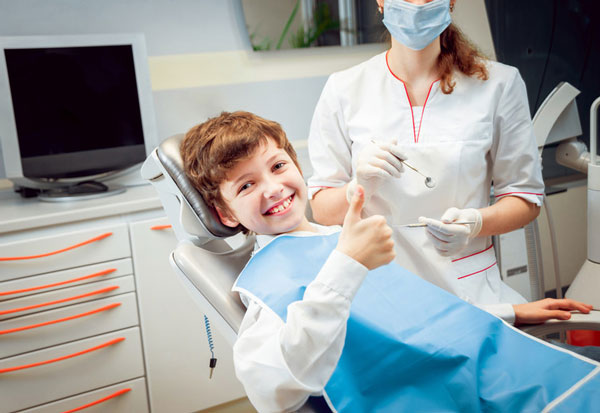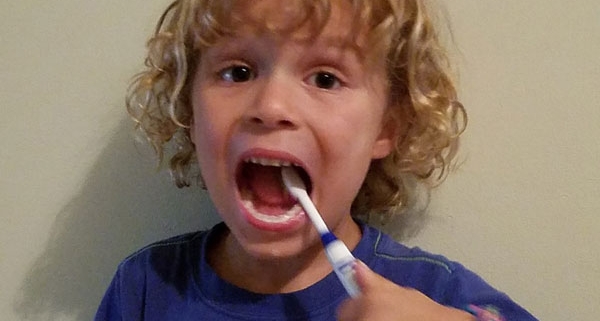Teeth have been big news lately. First, there was the issue of whether flossing really helps lower the risk for tooth decay and gingivitis. And now, questions about how often we really need to get dental X-rayshave made the news. The bottom line is that, clinically, these are complex issues that can’t easily be reduced to a simple soundbite.
Maybe it’s time to take a step back and talk about something we can all agree on – toothbrushing.
As a dentist, educator and clinical researcher (an academic dentist sounds so, well, dismissive), I was involved in a very small study, conducted in India, that examined whether taking a smart phone video selfie might help people learn to brush their teeth in a more effective manner. Well, can it help? Short answer: Maybe. Longer answer: It’s complicated, too.
A little selfie-consciousness may be good
Our recent study was conducted by three dentists from India, another researcher from the United States and me. We examined the feasibility of using smart phone video “selfies” to help improve toothbrushing technique.
We conducted a small proof-of-concept study, to determine whether toothbrushing with selfie-taking is worth studying further. As part of the study, Indian dental students were given a one-time toothbrushing training session. Then over two weeks, they recorded – on their phones in the privacy of their own home – five toothbrushing selfies.
Later, the dentist researchers from India reviewed and characterized the selfies. With further analyses from my US colleague, we found some changes and variation over time in the quality and accuracy of toothbrushing.
These changes may suggest that participants were trying to create a new habit, trying to change their behavior, almost as if, while taking the selfie, someone was watching them.
The thought was that by using selfies, participants were more self-conscious about changing their ingrained toothbrushing approach and so may have been better able to “override” their habitual way of brushing. Also, the participants may have had more fun or been more curious about doing a sometimes mundane task.
Habits are hard to change. One needs to overcome “muscle memory” to establish a new behavior. So relearning or retraining, just as with any sports-related skill, may be a gradual process, one prone to trial, error, forgetting and relapse. Some of our data might generally support this. But, based on our pilot study, it seems like adding the selfie to the mix could help people learn, well, new tricks.
Why toothbrushing matters
Why bother brushing our teeth? Oral health is a significant part of overall health. Oral hygiene such as tooth-brushing and flossing, physically cleaning between teeth, can help prevent gum disease and, to a degree, perhaps tooth decay. Cavities can occur between your teeth, where food particles and bacterial debris can linger because a toothbrush often can’t reach into these areas. Your dentist takes X-rays, also known as bite wings, in part to look for tooth decay in these areas. Tooth loss, especially of ones seen when smiling and talking, can lead to a lowered self-esteem and feeling self-conscious in social situations.
Tooth loss can also lead to poor physical health. For example, it can encourage a “softer” diet with fewer fruits, nuts and vegetables. Such food intake can promote a host of diseases and conditions, including weight gain, diabetes and heart disease. And of course, there’s tooth pain, which can be exquisite.
Effective toothbrushing can remove bacteria and organic debris known as dental plaque. Brushing with toothpaste also helps deliver topical fluoride to the teeth, which helps arrest and even reverse early forms of tooth decay.
Persons with risk factors for tooth decay, such as those who consume high levels of processed sugars, do not drink fluoridated water, have infrequent dental visits and have poor toothbrushing habits (lower skill level and less frequent brushing), may benefit from learning more effective oral hygiene techniques.
Having a lower income is associated with many of these risk factors, but most people – regardless of income – can probably improve their oral hygiene skills. And, over the long haul, this could help people keep more teeth and have better oral health.
It’s most important to brush your teeth at night, when your salivary flow goes down. Salivary flow helps buffer the acidic content in your mouth. If you have food particles in your mouth, then certain bacteria use these sugars (almost any carbohydrate) to grow and then give off a form of acid as a byproduct. And it’s this acid that causes tooth decay.
The same goes for kids. Ideally, brush their teeth after breakfast and at night before bed. Most kids can’t brush well until around the age where they can tie their shoes, so an adult will usually do a better job up to that point.
How should you brush? Sometimes people hear different advice from different dentists or hygienists. There is really no “one size fits all” approach, but there are key themes to effective tooth-brushing.
With a soft toothbrush, use gentle, small, circular motions on each tooth, and (using a two-finger “pencil grip” – not too much force) aim the bristles gently at a 45-degree angle where the tooth meets the gum tissue. Pay attention to all tooth surfaces, including the cheek side, the tongue side and the biting surface of each tooth.
Share your selfie – with your dentist or hygienist.

While ours is very a preliminary study, it opens a door.
But keep in mind, it’s not just the taking of the selfie alone. You will need to review it with your dentist or dental hygienist to get tips on how to improve and on the most important things to work on. Over time, this new, more effective brushing style could become your default habit. But then, you may need another selfie every so often, to make sure that you’re not slipping back into old habits.
An application of the toothbrushing selfie is that technology could be used to evaluate, monitor and permit providers to give real-time, convenient oral hygiene feedback to people across periods of time. This can help put a greater emphasis on prevention, which, at a minimum, should promote good dental checkups and could help keep costs down.
Another application is to remotely screen any number of children in rural areas. A five-second selfie of all the teeth, when reviewed by a dentist, could help identify those who need more immediate or even urgent dental intervention.
Future studies could allow individuals to review their own toothbrushing and critique themselves, and providers could “chime in” with positive comments and suggestions at regular intervals. This could help us understand how behavior change works and what approaches work best for whom.
There are a number of possible applications. The caveat, however, is that confidentiality and legal concerns would have to be ironed out first.
But, again, this was just an initial study, a first step. We established that people could take selfies at home and that we could and later analyze how well they brushed.
That gives us dentists something to smile about.
by Lance Vernon
Senior instructor, Case Western Reserve University
Cross-posted from The Conversation




